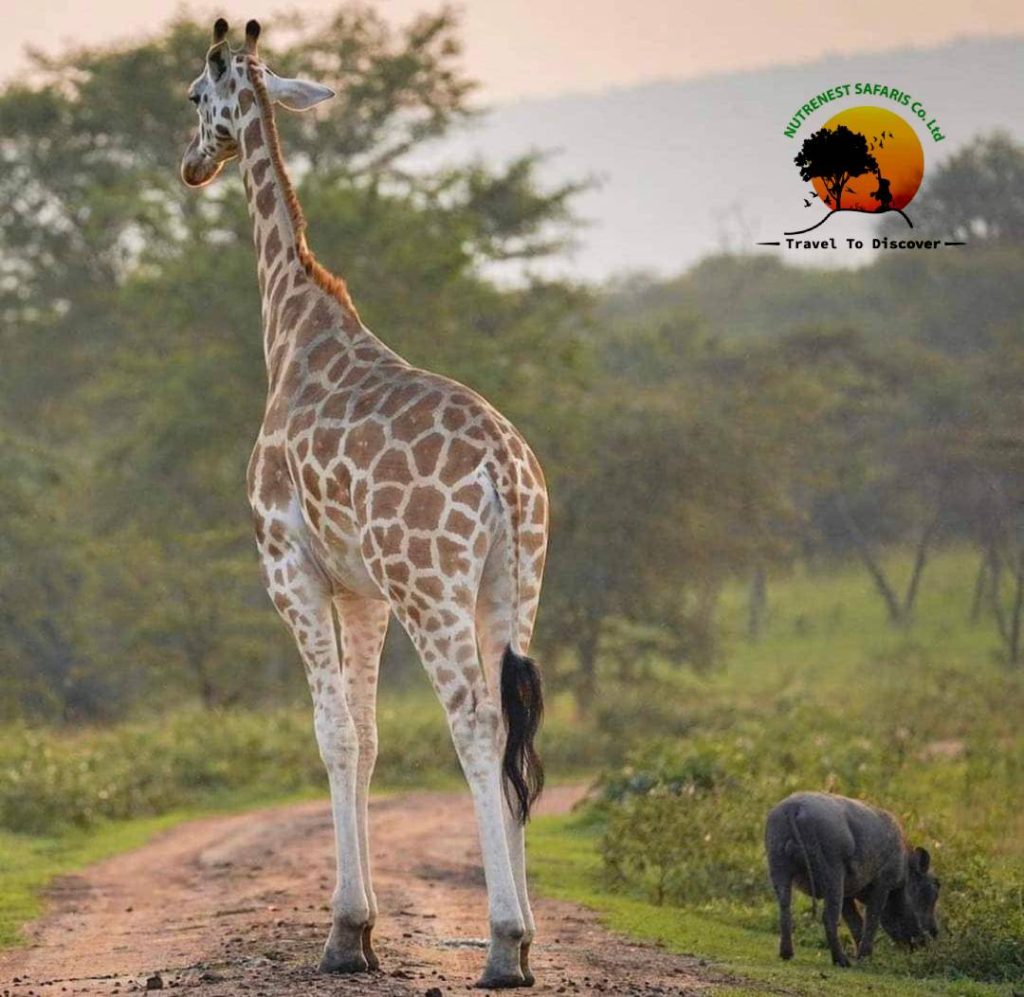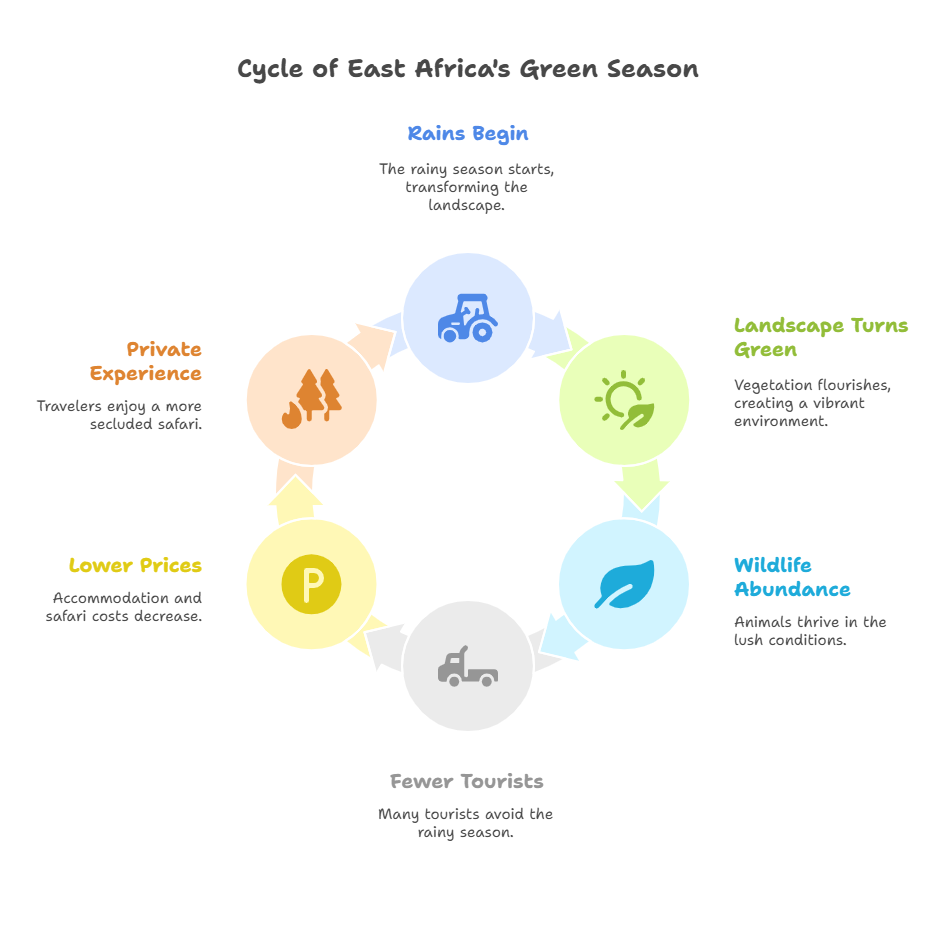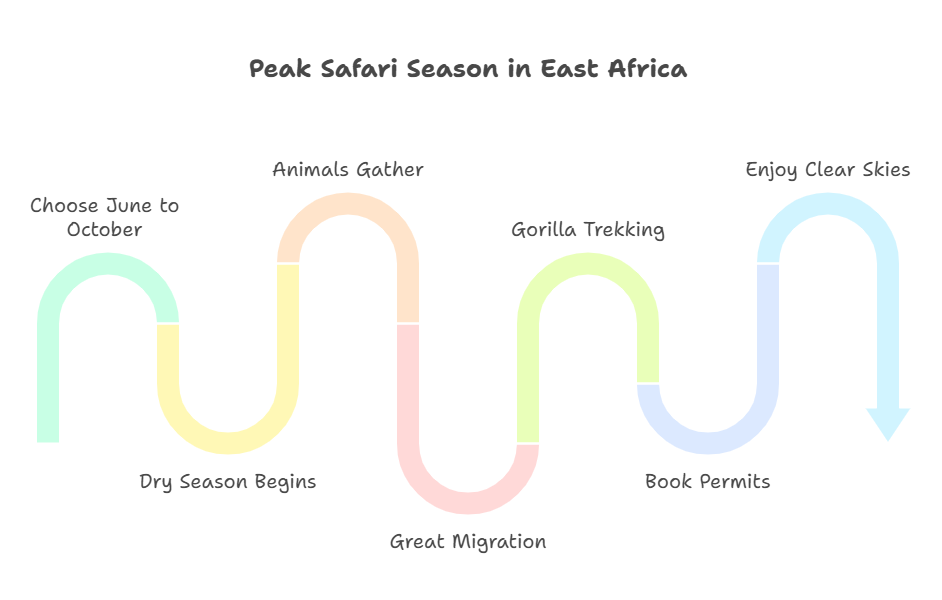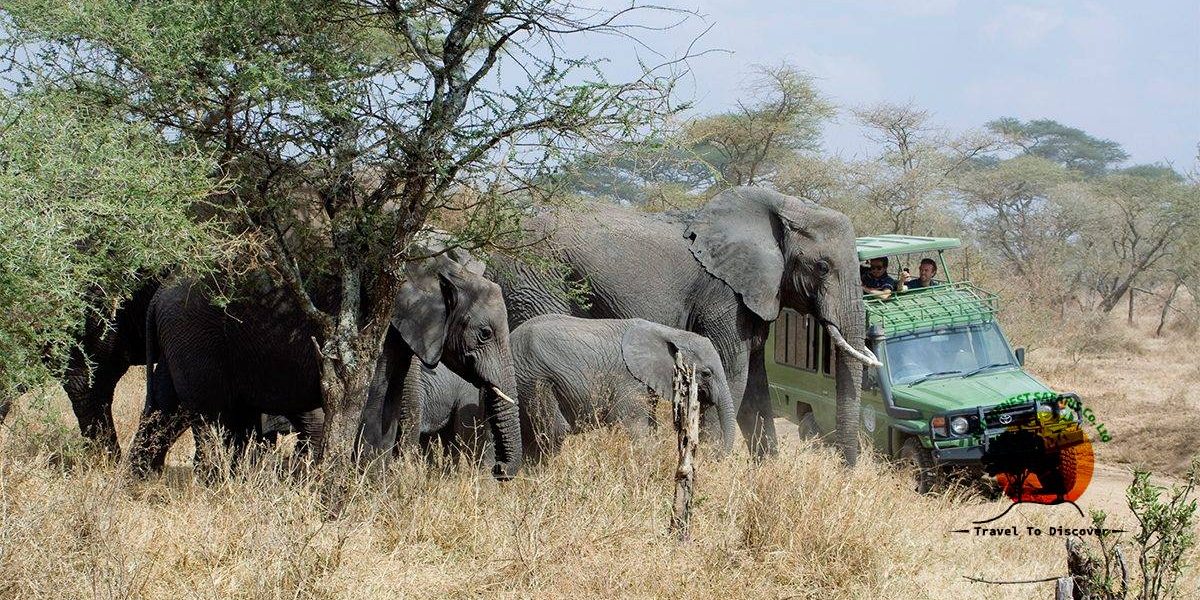East Africa attracts wildlife, nature, and culture lovers but offers so much more: breathtaking landscapes, some of the world’s most iconic National Parks, and incredible experiences with animals. Whether you are navigating streets and shopping with a Nairobi City Tour Package or getting lost in the forests of Uganda for gorilla trekking adventures, your trip will depend on timing.
Few activities in East Africa are better suited for some months due to their unique climate patterns and local environmental conditions. Choosing the best months to visit, you can create unforgettable memories in East Africa, from gorilla trekking in Uganda’s swamps to enjoying a 10 day Kenya safari.

January to March: Calving and Clear Skies
This season commences with the most thrilling event in the Serengeti and certain regions of southern Kenya as the calving period. From January and February and into early March, thousands of wildebeests give birth in the Ndutu region of Tanzania. The natural phenomena of the area attract a variety of predators, including lions, leopards, and hyenas, making it exciting for any safari-goer, especially those who can witness nature in its rawest form.
It is warm and dry during the day, which makes wildlife spotting easy. Kenya’s Masai Mara, Amboseli, and Lake Nakuru National Parks are especially fruitful for this visit- one can witness the Big Five, flamingos, and elephants, all against the scenic backdrop of Mount Kilimanjaro.
For a brief duration, such as 2 days gorilla trekking safari in Uganda, it is also a good time. While not officially classified as part of the dry season, these months experience reduced rainfall, which alleviates the strain on forest trails and enhances the likelihood of successful trekking.

April-May: The Green Season
The prolonged rainy season in East Africa occurs from April to May- as the green season. Several tourists do not travel during this time- because it rains and pathways get muddy, but this can be a suitable time to travel. The landscape turns lush and green with an abundance of avian species and vigorous wildlife; however, it will take some searching and patience. Dramatic clouds and spectacular views often provide the best conditions for photographers. The emptiness is an advantage, providing a more private safari experience and lower accommodation prices, and is a perfect time for budget travelers.
While many lodges do close for refurbishment or access, many others remain open.

June to October: Peak Safari Season
For the best safari, choose June to October. The long dry season is exceptionally favorable for wildlife viewing in East Africa. As water starts to disappear, animals gather more around the rivers, lakes, and watering holes; animals become more visible on game drives.
It is when the Great Wildebeest Migration in the Masai Mara happens (July to September). It’s breathtaking to see the Mara River Crossings- here, thousands of wildebeest and zebra plunge into the Mara River (infested with crocodiles) while predators watch them jump off.
These are the best months to trek gorillas in Uganda and Rwanda, as it’s easier to trek in a forest under dry conditions, and gorillas tend to stay in areas that are accessible to visitors. The forest is a home for other primates, colorful birds, and plants, making the entire journey into the jungle a fun-filled adventure.
It is advisable to book permits and accommodation ahead of this peak season. Rest assured that all the effort will be worthwhile: clear skies, plentiful wildlife, and ideal travel conditions come together to create memories that will last a lifetime.

November to December: Short Rains and Scenery Revival
In November, brief rainfall begins and comes to an end at the beginning of December. These months thus offer a period of aesthetic charm wherein the green landscape forms a blossomed basis.
Rain typically occurs in brief intervals during the late afternoon or early evening, allowing most activities to be conducted throughout the day. This time is particularly favorable for observing wildlife, as birdwatching becomes especially fruitful with the return of migratory species to the region. From a photogenic perspective, it is all lush greenery, with fewer tourists to offer any competition to lodges and camps.
Many East African countries hold festivals and traditional events around this time, allowing travelers to engage more fully with local communities. The peaceful exclusivity during this time is hard to come by when the tourist months hit.

Matching Your Interests to the Seasons
The decision regarding the timing of your visit to East Africa is influenced by your interests and the specific sights you wish to experience. For instance, if you want to observe the Great Migration or the Big Five, the period from July to October can be the optimal choice. If you want to see the bird species or want to travel less, the months of November, April, and May may be good times.
Generally, the dry season, especially between June and October and December to February, offers good trekking conditions and visibility for hiking.
But whenever you go, every season adds character to the East Africa experience. Each of the natural landscapes, cultures, and animals signifies the distinctiveness of every experience, something different.
Final thoughts
In East Africa, every season unfolds, developing from the bustling vibrancy via a Nairobi city tour package to the endless savannas of Kenya or met with fogs in the forests of Uganda and Rwanda. Choosing the right time of year to visit will ensure a memorable experience.
If you’re ready to start planning an East Africa trip with us, Nature Nest Safaris will help you along the journey. We are licensed and registered as a tour and travel agency in Uganda, planning custom East African itineraries to match your travel needs (selecting the appropriate time). Whether you are seeking a short city tour, an exciting safari, or an unforgettable gorilla trekking experience, our dedicated team works to make your journey smooth, secure, and memorable.
Contact us to let Nature Nest Safaris help you discover the best of East Africa, one season, one safari, and one unforgettable memory at a time.





